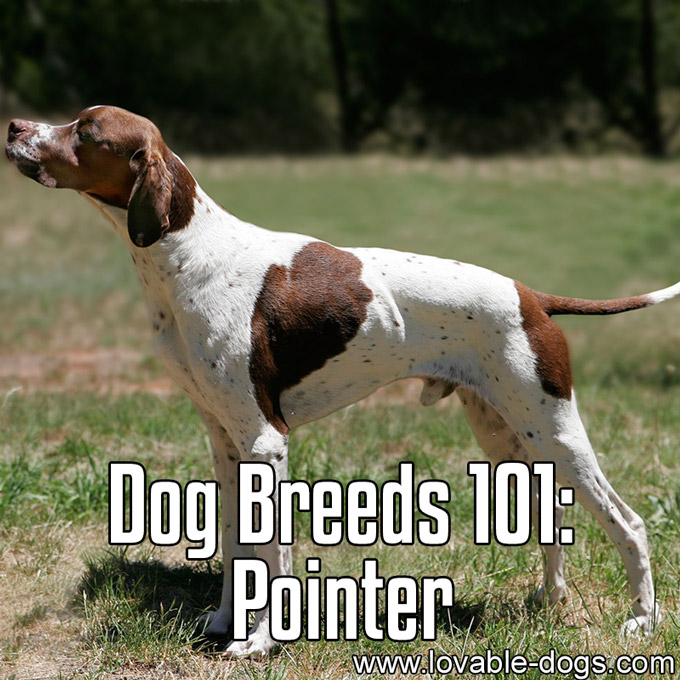
Dog Breeds 101: Pointer – Image To Repin / Share
Photo – Wikipedia – lic. under CC 3.0
The Pointer was first bred in England to catch rabbits and birds. These dogs are natural hunters and excel in locating and retrieving game. [1] Indeed, Bill Tarrant states in his book How to Hunt Birds with Gun Dogs, “In all my gun dog life, the finest dog who ever took me hunting was a three-quarter English pointer, one-quarter short-haired German pointer named George.” [2]
The Pointer is said to have been around since 1650. They are believed to be the product of crossing several breeds including the Setter, Bulldog, Newfoundland, Greyhound, Bloodhound, Foxhound, and the Italian Pointer. The Pointer was first recognized by the American Kennel Club in 1884. Today, this brilliant gun dog excels in obedience and agility competitions.
This breed stands completely still when spotting game and its tail points directly at its target, hence the name “Pointer.” When hunting game was more popular, Pointers were of the greatest importance.
This hunting dog is best distinguished by its deep muzzle. Pointers tend to be white and one other color. The second color can be one of the following: orange, black, liver or lemon. [2] Their short coats are normally dense and smooth, rarely requiring brushing.
English pointers are considered to be energetic and enthusiastic hunters. They are known to be patient, affectionate, friendly, and loyal. They are very loving and devoted to their owners but can be reserved toward strangers. These dogs also love children and can easily adapt to new environments as well as other household pets.
It is extremely important to begin training these dogs at an early age and experts recommend owners to consider professional help. [3] Adequate daily exercise can help keep Pointers calm and relaxed at home. However, future owners of this breed should be aware that this dog will not be happy in an apartment. They are considered to be extremely tireless and energetic, thus, they thrive outdoors or in homes with backyards. If these dogs do not receive sufficient exercise, it is possible they will become restless or even destructive.
The Pointer’s short coat rarely requires bathing or grooming. On the other hand, the owner of a Pointer should keep in mind that this dog’s coat cannot withstand cold weather. Therefore, these dogs should be kept inside in cold winter months.
The Pointer has an average lifespan of 12.4 years. [4]
References:
[1] John R. Falk, The Complete Guide to Bird Dog Training (Globe Pequot, 2006).
[2] Bill Tarrant, How to Hunt Birds with Gun Dogs (Stackpole Books, 2002).
[3] Joe Healy, Training a Young Pointer: How the Experts Developed My Bird Dog and Me (Stackpole Books, 2005).

